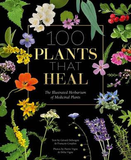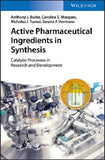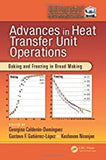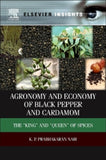Characterization of Impurities and Degradants Using Mass Spectrometry by Birendra Pramanik (Editor), Mike S. Lee (Editor), Guodong Chen
Characterization of Impurities and Degradants Using Mass Spectrometry
CONTRIBUTORS.
ACRONYMS.
PART I METHODOLOGY.
1 Introduction to Mass Spectrometry (Scott A. Smith, Ruth Waddell Smith, Yu Xia, and Zheng Ouyang).
1.1 History.
1.2 Ionization Methods.
1.3 Mass Spectrometer Types.
1.4 Tandem Mass Spectrometry.
1.5 Separation Techniques Coupled to Mass Spectrometry.
1.6 Prospects for Mass Spectrometry.
References.
2 LC Method Development and Strategies (Gang Xue and Yining Zhao).
2.1 Introduction.
2.2 Column, pH and Solvent Screening.
2.3 Gradient and Temperature Optimization.
2.4 Orthogonal Screening.
2.5 High-Efficiency Separation.
2.6 Conclusions.
References.
3 Rapid Analysis of Drug-Related Substances using Desorption Electrospray Ionization and Direct Analysis in Real Time Ionization Mass Spectrometry (Hao Chen and Jiwen Li).
3.1 Introduction.
3.2 Ionization Apparatus, Mechanisms and General Performance.
3.3 Drug Analysis in Biological Matrices using DESI and DART.
3.4 High-Throughput Analysis.
3.5 Chemical Imaging and Profiling.
3.6 Future Perspectives.
References.
4 Orbitrap High-Resolution Applications (Robert J. Strife).
4.1 Historical Anecdote.
4.2 General Description of Orbitrap Operating Principles.
4.3 The Orbitrap is a "Fourier Transform" Device.
4.4 Performing Experiments in Trapping Devices.
4.5 Determining Elemental Compositions of "Unknowns" Using an Orbitrap.
4.6 Orbitrap Figures of Merit in Mass Measurement.
4.7 HPLC Orbitrap MS: Accurate Mass Demonstration and Differentiation of Small Molecule Formulas Very Proximate in Mass/Charge Ratio Space.
4.8 Determination of Trace Contaminant Compositions by Simple Screening HPLC-MS and Infusion Orbitrap MS.
4.9 Determining Substructures: Orbitrap Tandem Mass Spectrometry (MSn).
4.10 Multianalyzer (Hybridized) System: The Linear Ion Trap/Orbitrap for MS/MS and Higher-Order MSn, n>2.
4.11 Mass Mapping to Discover Impurities.
4.12 The Current Practice of Orbitrap Mass Spectrometry.
4.13 Conclusion.
References.
5 Structural Characterization of Impurities and Degradation Products in Pharmaceuticals Using High-Resolution LC-MS and Online Hydrogen/Deuterium Exchange Mass Spectrometry (Guodong Chen and Birendra N. Pramanik).
5.1 Introduction.
5.2 Characterization of Impurities.
5.3 Characterization of Degradation Products.
5.4 Conclusions.
References.
6 Isotope Patten Recognition on Molecular Formula Determination for Structural Identification of Impurities (Ming Gu).
6.1 Introduction.
6.2 Three Basic Approaches to Isotope Pattern Recognition.
6.3 The Importance of Lineshape Calibration.
6.4 Spectral Accuracy.
6.5 Formula Determination with Quadrupole MS.
6.6 Formula Determination with High-Resolution MS.
6.7 Conclusions and Future Directions.
References.
PART II APPLICATION.
7 Practical Application of Very High-Pressure Liquid Chromatography Across the Pharmaceutical Development-Manufacturing Continuum (Brent Kleintop and Qinggang Wang).
7.1 Introduction.
7.2 Theory and Benefits of VHPLC.
7.3 VHPLC Method Development.
7.4 Other Practical Considerations.
7.5 VHPLC Method Validation.
7.6 Summary.
References.
8 Impurity Identification for Drug Substances (David W. Berberich, Tao Jiang, Joseph McClurg, Frank Moser, and R. Randy Wilhelm).
8.1 Introduction.
8.2 Case Studies.
8.3 Conclusions.
References.
9 Impurity Identification in Process Chemistry by Mass Spectrometry (David Q. Liu, Mingjiang Sun, and Lianming Wu).
9.1 Introduction.
9.2 Experimentation.
9.3 Applications.
9.4 Concluding Remarks.
Acknowledgments.
References.
10 Structure Elucidation of Pharmaceutical Impurities and Degradants in Drug Formulation Development(Changkang Pan, Frances Liu, and Michael Motto).
10.1 Importance of Drug Degradation Studies in Drug Development.
10.2 Drug Degradation Studies in Formulation Development.
10.3 Complexity of Impurity Identification in Drug Development.
10.4 Strategy for Structure Elucidation of Unknowns.
10.5 Hyphenated Analytical Techniques Used in Drug Development.
10.6 Case Studies.
Acknowledgment.
References.
11 Investigation of Degradation Products and Extractables in Developing Topical OTC (Over the Counter) and NCE (New Chemical Entity) Consumer Healthcare Medication Products (Fa Zhang).
11.1 Introduction.
11.2 Oxidatively Induced Coupling of Miconazole Nitrate with Butylated Hydroxytoluene in a Topical Ointment.
11.3 Extractables from Rubber Closures of a Prefilled Semisolid Drug Applicator.
11.4 New Degradation Products and Pathways of Vitamin D and Its Analogs.
11.5 Reductive Degradation of a 1,2,4-Thiadiazolium Derivative.
11.6 Conclusions.
References.
12. Characterization of Impurities and Degradants in Protein Therapeutics by Mass Spectrometry (Li Tao, Michael Ackerman, Wei Wu, Peiran Liu, and Reb Russell).
12.1 Introduction to Therapeutic Proteins.
12.2 Recent Advances in Mass Spectrometry.
12.3 Impurities.
12.4 Degradation Products.
12.5 Conclusions.
References.
13 Identification and Quantification of Degradants and Impurities in Antibodies (David M. Hambly and Himanshu S. Gadgil).
13.1 Introduction to Antibodies and Protein Drugs.
13.2 Overview of Degradations and Impurities in Protein Drugs and Antibodies.
13.3 Methods to Identify and Quantitate Degradations and Impurities.
13.4 Conclusions.
Appendix.
References.
INDEX.
MIKE S. LEE is President of Milestone Development Services, a provider of consulting services specializing in pharmaceutical analysis and accelerated drug discovery and development strategies in Newtown, Pennsylvania. He previously directed program research at Bristol-Myers Squibb, Pharmaceutical Research Institute in New Brunswick, New Jersey.
GUODONG CHEN is Principal Scientist in Bioanalytical and Discovery Analytical Sciences at Bristol-Myers Squibb in Princeton, New Jersey. He heads a mass spectrometry group in support of drug discovery as well as development programs in small molecule pharmaceuticals and biologics. He received his PhD in analytical chemistry from Purdue University under the direction of Professor R. Graham Cooks.


















